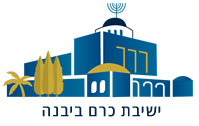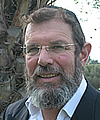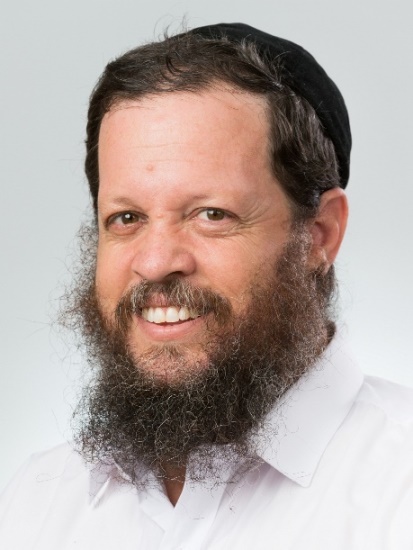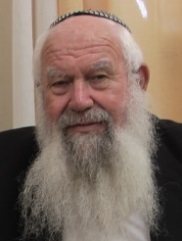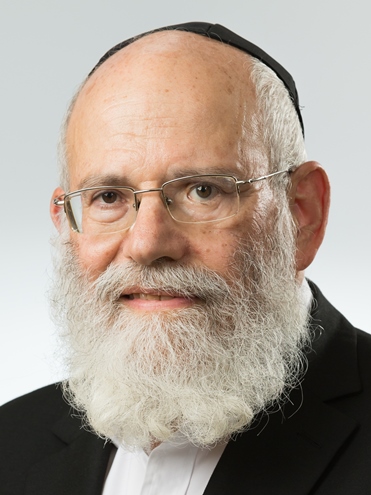Zachor and Shamor at the Same Moment
הרב משה סתיו
Chazal addressed the differences between the dibrot that appear in Sefer Shemot and those that appear in Sefer Devarim in one sentence: “Zachor and shamor were said bedibur echad, at the same moment” (Rosh Hashana 27a). In fact, however, the change of zachor and shamor is not the only difference between the sets of dibrot, and it is not even the most glaring. The Ramban addresses this in his commentary on Parshat Yitro (Shemot 20:8):
It says [in Parshat Yitro], “Remember the day of Shabbat to sanctify it,” and in Mishneh Torah it says, “Guard the day of Shabbat to sanctify it” (Devarim 5:12). Chazal taught about this: “Zachor and shamor were said at the same moment.” But they did not note the other phrases that are changed. Their intent is that zachor is a positive command to remember to sanctify the Shabbat day, and not to forget it, whereas shamor is a negative command, as every place in which the terms hishamer, pen, and al appear, it indicates a prohibition (Eruvin 96a). This is a command to guard the sanctity of Shabbat by not violating it. [Chazal therefore note specifically this change because] it would not have been appropriate for Moshe to change the words of Hashem from a positive command to a negative command. But regarding the fact that the second set of dibrot replace the words, “vechol temuna,” with, “kol temuna,” leaving out the vav, and there is an added vav on the words, “ve’al sheleishim,” and all similar changes between the dibrot – these are insignificant, as they are all the same. And only those who are unacquainted with Talmudic learning would have difficulty accepting this explanation.
However, there are a number of significant differences between the dibrot within the very mitzva of Shabbat itself. The second set of dibrot, for example, are more detailed regarding the animals that are prohibited to work (“your ox, your donkey, and your every animal” – Devarim 5:14). The most prominent difference, however, lies in the reason given for the commandment. The first set of dibrot states that the purpose of the mitzva is to remember the creation: “For in six days Hashem made the heavens and the earth… and He rested on the seventh day. Therefore, Hashem blessed the seventh day and sanctified it” (Shemot 20:11). In contrast, the second set of dibrot states that the purpose is to remember that we were slaves in Mitzrayim: “In order that your slave and your maidservant may rest like you. And you shall remember that you were a slave in the land of Egypt, and Hashem, your God, has taken you out from there… Therefore, Hashem, your God, has commanded you to make the Shabbat day” (Devarim 5:14-15).
Furthermore, there are a number of differences between the two sets of dibrot that appear to be more significant than the addition or omission of a vav. In the mitzva of kibud av va’em, the second set of dibrot add, “and so that it will be good for you” (Devarim 5:16). The first set prohibits being an “ed sheker” (Shemot 20:13), whereas the second refer to an “ed shav” (Devarim 5:17). The first set commands, “Lo tachmod,” and then lists all the things that one most not covet, mentioning another’s house first and only then his wife (Shemot 20:14); the second set follows “Lo tachmod” with, “Lo titaveh,” and the list begins with another person’s wife (Devarim 5:18).
It seems that the two sets of dibrot are addressed to two different types of people. Even among those who believe in Hashem, there are differences regarding their approach to avodat Hashem. Some serve Hashem with the goal of living peacefully in this world. Chazal refer to these people as “amei ha’aretz.” They are not those who despise the chachamim, but rather the simple people, who do not elevate themselves above their physical needs, which are tangible and which they can therefore relate to. In contrast, others recognize the pleasure and the truth in spiritual perfection, while at the same time not disengaging entirely from physical life. Very few lofty individuals achieve the highest level, at which they live in the presence of the Shechina and despise all bodily pleasure.
This is what the Ramban explains (Vayikra 18):
Know that a person’s life with the mitzvot in accordance with his preparation for them. One who does a mitzva shelo lishma, with the goal of receiving reward, will live with them many days in this world, with wealth and possessions and honor. As the pasuk states (Mishlei 3:16), “At her left hand is wealth and honor,” and Chazal explain (Shabbat 63a), “To those who go to the left with it, there is wealth and honor.” And similarly those who perform the mitzvot in order to achieve thereby Olam HaBa, those who serve out of yira. [Any avodat Hashem that is driven by an external cause is considered avoda miyira; see Rambam, Hilchot Teshuva, ch. 10.] They merit, through their intent, to be spared from the judgment of the wicked, and their souls rest in comfort. And those who involve themselves with mitzvot out of love, as is appropriate, while continuing to be involved in worldly matters… will merit in this world good lives, as is natural, and their merit is complete in the next world. But those who leave behind all worldly matters and pay no attention to them, as though they have no bodies at all, and all of their thoughts and intents relate to their Creator alone… will live forever, both physically and with regard to their soul, as we see from the story of Eliyahu and the tradition regarding him, as well as from the midrashim about Chanoch and those in Olam HaBa who are resurrected in the time of techiyat hameitim. For this reason, the Torah tells us the reward for the mitzvot: “So that your days shall be lengthened,” “so that you may live,” “and you will live long” – for the language includes all types of life, in accordance with the level of the person.
Based on this, we can explain that the differences in the dibrot in Sefer Devarim reflect the fact that they were said to different parts of the nation.
Moreover, even a single individual includes all of the different persona within himself. The person who goes up to Yerushalayim on the shalosh regalim differs from the same person in his own home. This point is reflected most strongly in the context of Shabbat. On the most basic level, every individual is entitled to rest based on what we learn from yetziat Mitzrayim. Indeed, throughout Sefer Devarim, Moshe attributes the root of obligations that are difficult to accept to this recognition. Without this basic recognition, man’s pride in his own accomplishments would prevent him from submitting. It is no coincidence that this basic recognition – the basis for what we now call “human rights” – has thrived only in places where the Torah has had an influence (through the medium of Christianity). These values do not exist in the Far East and in Africa, where the Torah’s values never reached.
There is a second element of Shabbat – it is the gift that Hashem chose to give to Yisrael. But the highest level is recognition that Hashem rested on this day. Our world is one of lacking, a world that must be repaired. Rest indicates a state of perfection; there is no need for any action. This rest thus creates the possibility of recognizing a perfect Olam HaBa, a world that is not in any need of repair.
The first set of dibrot speak on a higher plane. In Sefer Devarim, Moshe, when speaking to the nation, uses language appropriate for the entire nation.
This distinction explains the other differences as well. For example, “edut shav” includes more that “edut sheker.” It includes the promises that a person makes, even those that are not binding, such as a promise to give a gift; even regarding such matters, it is prohibited to lie.
Upon reflection, we see that the entire difference is expressed in the difference between zachor and shamor. Rashi tells us (Vayikra 22) that shamor also indicates Torah learning: “Veshamartem – this is the mishna.” The method of learning Torah is different in the first and second sets of dibrot.
At the time of the giving of the first luchot, Bnei Yisrael were on a lofty spiritual level, to the degree that Chazal say that no nation could have ruled over them. Thus, the first set of luchot address the person on a higher spiritual level; his recognition of the truth is clear, and he therefore “remembers,” implying consciousness. They learned through spiritual identification, and they therefore remembered everything. The second luchot, in contrast, were given after Bnei Yisrael had lost that spiritual standing, and they thus emphasize the element of “shamor,” the toil and effort necessary in order to learn Torah.
The Ramban writes:
I question: If zachor and shamor were indeed both said by Hashem, why weren’t they both recorded in the first luchot? It is likely that in both first and second luchot said “zachor,” and Moshe explained to them that “shamor” was said along with it. And that is Chazal’s true intent.
In other words, in Sefer Devarim, Moshe’s goal is not only to explain meaning, like a teacher of reading comprehension, but rather to guide the people regarding the idea that is expressed. He explains that “remembering” Shabbat is expressed through guarding it, which entails learning and fulfilling its halachot.
And in the midrash of Rabbi Nechunya ben HaKaneh (Sefer HaBahir 172), another deep secret regarding zachor and shamor is mentioned, regarding the idea that “remembering” applies to the day and “guarding” applies to the night. This is reflected in the statement of Chazal (Bava Kama 32b) that on the night of Shabbat, we say, “Bo’i kalla,” “Come, O Bride! Let us go out to greet the Shabbat queen-bride.” This is also why they refer to the Kiddush during the day as “Kiddusha Rabba” (Pesachim 106a). Understand this.
The daytime reflects revealed good. During the day, divine chesed is revealed to all; at night, one must have faith and look to find that good.
And the truth is that the attribute of zachor also hints to the positive commandments, which derives from the attribute of love, which itself derives from the attribute of mercy. For one who performs the command of his master is beloved to his master, who then has mercy upon him. The attribute of shamor reflects the negative commands, which reflect the attribute of justice and derives from the trait of fear. For one who guards himself from performing that which is evil in his master’s eyes fears him. Thus, a positive commandment is greater than a negative commandment, just as [service out of] love is greater than [service out of] fear, for one who actively fulfills the will of his master with his body and resources is greater than one who refrains from doing that which his master considers evil. This is the reason for the principle that a positive command overrides a negative command. It is also the reason that the punishment for violating a negative command is more severe – he is legally punished through lashes or the death penalty – whereas there are no legal repercussions for one who fails to perform a positive command. This is with the exception of those who rebel and say, for example, “I refuse to fulfill the mitzva of lulav or tzitzit; I refuse to perform the mitzva of sukka,” in which case the Sanhedrin orders lashes until he agrees to perform the mitzva.
When a person begins on the path of avodat Hashem, he is on the level of yira, and his main focus is on the toil in learning. As he achieves higher spiritual levels, learning entails less of this style of learning and more learning of “zechira.”
השיעור ניתן בכ"ו שבט תשע"ח
קוד השיעור: 7989
מאמר בעניין מעמד הר סיני ועשרת הדיברות
(זמן חורף תשעח)
לשליחת שאלה או הארה בנוגע לשיעור:
